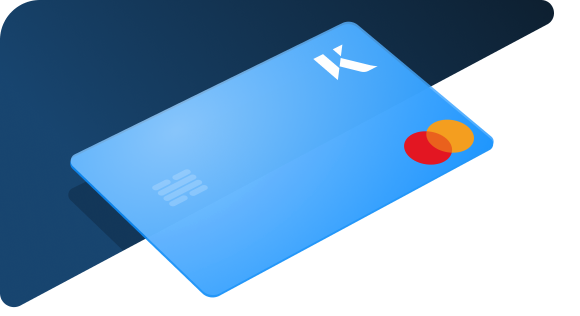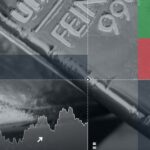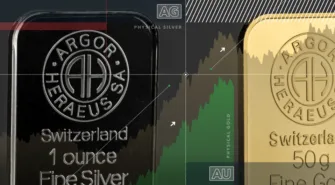After a 2% loss in August, gold has shown remarkable demand resilience and solidity.
On the other hand, silver ended August with an interesting recovery that brought the silver price back above $24.
Before looking ahead to September, let’s first explore the movements witnessed in August, the macroeconomic landscape, and potential catalysts for both metals next month.
Gold Price Analysis
The gold price took a hit in the first three weeks of August from the hawkish rhetoric of the Federal Reserve, before showing encouraging signals in the final segment of the month.
The price steadily declined until August 21st, bottoming at $1,885 before going on to rally above $1,900. Despite taking a dip overall in its price, gold’s resilience remains evident. Paired with relatively low volatility – with prices fluctuating between $1,885 and $ 1,955 – this can be considered a positive signal.
From a technical perspective, the first support zone is placed in the region of $1,885, after the low reached on the 17th and 21st of August. Conversely, a clear return to above the resistance zones of $1,930 and $1,950 would signal strength for the yellow metal, increasing the chances of seeing gold return to the $2,000/oz mark.
Investors are keenly observing central bank actions now that summertime is drawing to a close, with particular attention on whether the Federal Reserve will raise rates in the final part of 2023. The rebound of gold above $1,900, even amid the restrictive tones from the Jackson Hole economic summit, underscores a sustained interest in this precious metal.
Central banks are still fighting inflation
In 2023, most major central banks have been in a “tightening mode”, with interest rates reaching two-decade highs in several countries and regions, including the US, the Eurozone, and the UK. The only significant exception is the Bank of Japan, which has kept official rates unchanged at -0.10% since 2016.
The overarching goal for these rate hikes has been to curb the surging inflation witnessed in 2022. This trend has persisted in August, although reported inflation rates have generally been on a trend towards a steady decline.
Central bank interest rate decisions
The Bank of England raised interest rates to 5% on the 3rd of August 2023. Eight out of nine members of the Monetary Policy Committee voted in favour of raising rates (two members would have even preferred another 0.50% hike!).
Both the Federal Reserve and European Central Bank increased rates by 25 basis points in their July meetings, hinting at possible further hikes in September. In contrast, the central bank of Brazil reduced rates from 13.75% to 13.25% in early August, and the Reserve National Bank of Australia maintained a borrowing rate of 4.10%.
Jackson Hole Symposium Insights
Without official meetings from the Federal Reserve and European Central Bank in August, all eyes were focused on the economic summit at Jackson Hole, Wyoming, held between August 24th and 25th. Investors were waiting for further indications towards the policymakers’ next steps for monetary policy.
Jerome Powell’s speech was relatively hawkish, emphasising a focus towards maintaining high interest rates until inflation approaches the 2% target (or the economy shows signals that it is moving in this direction). This rhetoric aligned with the last FOMC meeting and other Fed members’ comments released at the Jackson Hole Summit. Powell also noted the economy is not showing signs of weakness, despite high rates and recession forecasts.
ECB president, Christine Lagarde, also stressed the importance of fighting inflation, confirming that rates will remain high in the Eurozone “as long as needed”. The two leading central bankers confirmed they will be looking at the upcoming macroeconomic data before making any official decisions. Currently, the official rates are 5.50% for the U.S. and 4.25% for Europe.
Gold in a high-rate environment
Historically gold hasn’t fared well in periods of high interest rates. Indeed, holding physical bullion does not pay yields or dividends – although it is worth noting that Kinesis’ gold KAU asset offers investors the opportunity to preserve their wealth in gold as well as earn a monthly yield on their holding, trading or spending activity.
Despite the high rates, gold has impressively gained around 6% from January to August 2023.
Two primary factors could be driving this: the anticipation of a slowdown in the global central bank’s hawkish monetary policies by early 2024 and the stock market’s robust performance. Indices like the S&P 500 and Nasdaq have risen by 15% and 36% YTD, respectively, prompting investors to diversify with gold as a haven asset.
The main catalysts for the gold price
After a relatively quiet August, investor’s attention is now focused on September’s macroeconomic data and central bank decisions.
Looking at the agenda, the Fed has three remaining monetary policy meetings before the end of the year, which are scheduled for the 20th of September, the 1st of November, and the 13th of December. The ECB is in a similar position, with meetings scheduled for the 14th of September, 26th of October and 14th of December.
Additionally, the Chinese economy, especially its real estate sector, and geopolitical events will play crucial roles in shaping gold’s trajectory. So far, the risk of a global recession has been avoided, but a slowdown in China could have global impacts.
As usual, the geopolitical scenario remains a major topic for gold, which is still considered as the major safe haven in markets’ storms.
Moreover, any positive news on the potential of a gold-backed currency proposed by the BRICS nations – Brazil, Russia, China, and South Africa – could boost the bullion price, although this still seems a way off.
Silver Price Analysis
The silver price rebounded in late August, recovering around 70% of the losses posted in the first 20 days of the month.
We have seen a significant improvement in the scenario from a technical point of view. The bearish mode seen since late July changed on August 17th, with the first green candle, followed by a significant recovery in the following days.
Silver seems to have built a solid support level at $22.5 per ounce, and long-term investors are showing keen interest whenever prices dip below $23. This could be attributed to silver’s industrial applications and its perceived growth potential compared to gold.
Overall, silver is starting September on a positive note and with a chance of extending its recent recovery. Notable resistance zones are between $25-25.2 and on the double top area of $26 reached in April and May 2023.
Carlo is an external market analyst for Kinesis Money. With a credential background in Economic Finance and International Exchange (MA), Carlo’s critical analysis of gold and silver markets’ performance is frequently quoted by leading publications such as Forbes, Reuters, CNBC, and Nasdaq.
This publication is for informational purposes only and is not intended to be a solicitation, offering or recommendation of any security, commodity, derivative, investment management service or advisory service and is not commodity trading advice. This publication does not intend to provide investment, tax or legal advice on either a general or specific basis.
